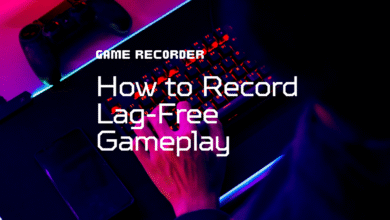Step-by-Step Guide to Test Valorant Ping in 2025

Understanding the Importance of Ping in Valorant
Ping is one of the most important metrics in any online multiplayer game, and in Valorant, it can determine whether your gameplay feels smooth or frustrating. Ping represents the time it takes for data to travel from your computer to the game server and back. In practice, this means that when you move your mouse or press a key, a lower ping ensures that your actions are reflected more quickly in the game. A higher ping can result in noticeable delays, missed shots, or poor movement synchronization, which players often describe as Valorant lag. This makes it crucial to test Valorant ping regularly, especially if you notice inconsistent gameplay performance.
Why Testing Valorant Ping Matters in 2025
As Valorant continues to evolve in 2025, its servers and infrastructure have become more sophisticated, but the demand for stable connections has grown as well. Competitive players cannot afford random spikes in latency, and even casual players benefit from smoother games. Testing your Valorant ping allows you to confirm whether performance issues are coming from your own network or external factors. For example, if you test Valorant ping and find it consistently high, you may need to switch servers, optimize your connection, or troubleshoot your internet setup. On the other hand, if your ping is low but you still face Valorant lag, the issue may lie elsewhere, such as in graphics settings or background applications.
Step One: Check In-Game Ping Display
The simplest way to test Valorant ping is by enabling the in-game ping display. Riot Games provides a built-in network information overlay that shows your ping and packet loss in real time. To enable it, go to the settings menu, navigate to the “Video” or “Stats” section, and turn on the option to display your network stats. Once activated, you will see your ping displayed on the top left corner of the screen while you play. Monitoring this metric during matches helps you understand whether spikes in Valorant lag coincide with ping fluctuations. If you notice a sudden jump from, say, 20ms to 120ms, that is a strong indicator that your internet connection is experiencing instability.
Step Two: Use Riot’s Server Selection Feature
Valorant allows you to choose your preferred server region before entering a match. This feature is invaluable when trying to test Valorant ping and ensure you connect to the lowest-latency server available. In 2025, the game provides expanded options with more global servers than ever before, including improved coverage in regions like South America, Asia-Pacific, and the Middle East. To optimize your connection, click the server selection icon in the lobby screen and review the listed ping values. Pick the server with the lowest ping, as this will give you the smoothest experience. Choosing the wrong server may be one of the most common causes of Valorant lag, so taking a moment to check this setting can drastically improve your matches.
Step Three: Run External Ping Tests
In addition to the in-game tools, you can test Valorant ping using external services. Online speed test websites and command-line tools like “ping” or “tracert” help you measure your latency to Valorant’s servers. Dedicated tools developed by the community can also provide deeper insight into your network path, identifying whether packet loss or routing issues are causing Valorant lag. Running these tests before you launch the game gives you a preview of how your connection may perform. If you notice unusually high ping even outside the game, it may indicate issues with your internet provider or local network equipment rather than Valorant itself.
Step Four: Troubleshoot Local Network Issues
Once you test Valorant ping and identify a problem, the next step is to troubleshoot your local network. Many cases of Valorant lag originate from home setups rather than Riot’s servers. Simple fixes can often reduce latency significantly. For instance, switching from Wi-Fi to a wired Ethernet connection eliminates interference and provides more consistent speeds. Restarting your router can also refresh your connection and clear temporary issues. Additionally, closing background applications that consume bandwidth—such as streaming services, file downloads, or other online games—can free up resources and stabilize your ping. Testing your Valorant ping after each of these adjustments will help you see whether the changes improve your connection.
Step Five: Optimize In-Game Settings for Better Performance
While ping is a network-related issue, in-game performance can amplify the feeling of Valorant lag. Even if you test Valorant ping and find it acceptable, poor frame rates or unstable rendering can make the game feel unresponsive. In 2025, Valorant provides advanced video settings to balance performance and visual quality. Lowering settings like shadows, anti-aliasing, or texture quality can reduce system strain, which improves responsiveness when combined with low latency. Consistently testing Valorant ping alongside frames per second (FPS) metrics gives you a holistic view of your performance, ensuring that both network and hardware factors are optimized.
Step Six: Contact Your Internet Service Provider
If you consistently test Valorant ping and find high values across multiple tools, the issue may be tied to your internet service provider (ISP). In such cases, contacting your ISP and requesting assistance is a necessary step. Many providers can run diagnostics, reset your connection, or suggest plan upgrades that better suit online gaming. By documenting your Valorant lag with screenshots of high ping results, you can provide evidence to your ISP that your connection is underperforming. In 2025, some ISPs even offer specialized gaming packages designed to minimize latency, so exploring these options can provide long-term improvements.
Step Seven: Use VPNs Cautiously in 2025
One of the more controversial methods to reduce Valorant lag is the use of Virtual Private Networks (VPNs). In some cases, a VPN can reroute your traffic through a faster path to Valorant’s servers, effectively lowering your ping. However, this is not always guaranteed and can sometimes make things worse. In 2025, Riot Games continues to discourage unnecessary VPN use, but players in underserved regions may still find it beneficial. If you decide to try this route, test Valorant ping both with and without the VPN to determine whether it truly improves performance. Always select reputable VPN providers to avoid introducing new problems such as packet loss or disconnections.
Step Eight: Monitor Riot’s Server Status
Sometimes Valorant lag has nothing to do with your connection. Server outages, maintenance, or unexpected spikes in player activity can all affect performance. In 2025, Riot maintains real-time server status pages and social media alerts to inform players of ongoing issues. Before diving into extensive troubleshooting, check whether the problem is widespread. If many players report high ping or Valorant lag at the same time, the best solution is simply to wait for Riot to resolve the server-side issue. Testing your Valorant ping during these events will confirm whether the issue is beyond your control.
Step Nine: Stay Consistent With Ping Testing Habits
Testing Valorant ping is not a one-time task. Your network conditions can vary depending on the time of day, the number of devices connected to your network, or even temporary ISP issues. Developing a habit of checking your ping before competitive matches ensures that you are aware of potential issues before they impact your gameplay. By combining in-game stats, external testing tools, and periodic troubleshooting, you create a comprehensive approach that minimizes Valorant lag. The more consistent you are with these practices, the smoother your experience will be over time.
Conclusion: Mastering Ping Testing for Valorant in 2025
In the fast-paced world of Valorant, even the smallest delays can separate victory from defeat. That is why learning to test Valorant ping effectively is one of the most valuable skills for any player in 2025. By using in-game tools, external testing methods, and proactive troubleshooting, you can identify and resolve the root causes of Valorant lag. From choosing the right server to optimizing your home network, each step contributes to a smoother, more competitive gaming experience. While occasional server issues may be beyond your control, maintaining good ping-testing habits ensures that you are always prepared. Ultimately, the ability to test and manage your Valorant ping not only improves your performance but also enhances your overall enjoyment of the game.




